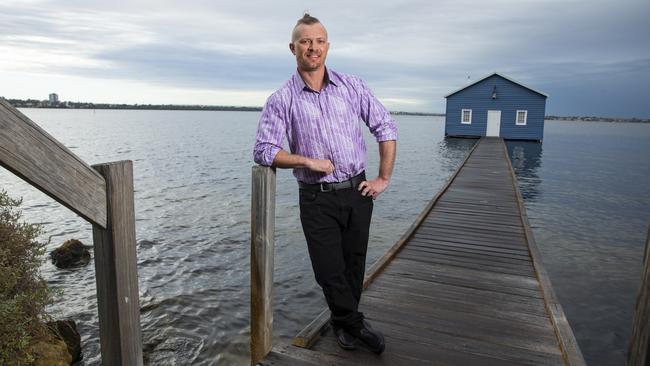This man goes on 'sperm tours' and has 17 kids
An aspiring "icon" in the donor world makes his money selling home insemination kits.

An aspiring "icon" in the donor world makes his money selling home insemination kits.
Meet the Perth man taking his sperm on a tour.
Adam Hooper is a 32-year-old father of two, with more than 15 donor children. He also has an eyebrow piercing.
Hooper lives a nomadic life. Traveling on “sperm tours” throughout Australia and the world, where he donates to women and recruits men.
Hooper makes his money selling home insemination kits. He told The Weekend Australian Magazine he is motivated by helping others and becoming an “icon” in the donor world.
He began donating sperm after an encounter with a lesbian couple who were grappling with the expenses of using a fertility clinic.
“Everyone in my family lived until their 90s so I thought it was something I could do,” he said.

In 2015, Hooper established Australia’s largest donor community, Sperm Donation Australia. The Group has more than 15,000 members, and a backlog of people waiting to join. The group allows donors and recipients to meet and discuss the kind of ongoing relationship they want, if any.
Some of the recipients connected through the private Facebook group meet regularly, allowing the donor siblings, or “diblings”, to grow up knowing their genetic family.
Hooper, who moderates the group, says he screens every potential member before they join Sperm Donation Australia. Interest in his service - and page - soared during Covid with an extra 4000 signing up.
“We want to see they are decent people,” he explained. “Sometimes I’ll even call them to get a feel for them. Many of the men are already fathers and appreciate the gift of life and how special it is to be a parent.”
Although, he won’t advise on the laws regarding donor family limits.
“When we get enough donors, no donor will have to be relied on to help as many people,’’ he says.
In Australia, there are state-by-state laws in place that regulate the number of families a donor can create. In Victoria, the limit is up to 10 families, including their own. In states without legislation, the National Health and Medical Research Council Guidelines recommend limiting donation to 10 families. In New South Wales, women are allowed to bear up to five children with one donor. And in Western Australia, the limit is five families, including the donor’s own.
Women and couples are turning to assisted fertility in increasing numbers, and demand for donor sperm has skyrocketed.
In the first nine months of this year, Monash IVF received 60% more inquiries for donor sperm than for all of 2021, and reported a 25% increase in donor sperm inquiries in 2021 compared with the previous year.
It’s impossible to know how many people are turning to the unregulated private sperm donation market. Though, Professor Fiona Kelly, Dean of La Trobe University law school and an expert in family health law told TWAM that “an increasing number of Australians are turning to the private online market for donors.”
“We have seen an increase year on year of sperm and egg donors, but we’ve seen a bigger increase in demand, largely due to the increase in single women seeking treatment. Single women are the biggest users of donor sperm in Australia,” Kelly said.
“As demand outstrips supply in clinics, an increasing number of Australians are turning to the private online market for donors."
"Private donation has always existed, particularly in the lesbian and gay communities, but the scale of what’s happening now is new. Private sperm donors are donating to many women, easily brought together online through web pages that resemble online dating sites.”
Experts warn of the risks involved in private donor arrangements. In the case of “prolific donors”, there’s a risk of sexual relationships occurring between siblings.
Anna MacLeod, CEO of the Victorian Assisted Reproductive Treatment Authority (VARTA), said private sperm donation puts recipients’ health at risk by exposing them to sexually transmitted diseases. It also denies the rights of the donor-conceived child, as well as the donor to have access to information about each other should the recipient not maintain contact.
Last year VARTA was contacted by a donor who’d donated to a couple with an agreement to maintain contact; once the baby was born, they disappeared. VARTA has also heard anecdotal reports of donors pressuring recipients into sex, rather than providing semen for self-insemination.
One survey found 58% of women felt pressured into having sex.
“When donors are prolific, donor conceived people don’t know who is out there – how many siblings they have or where they are. I don’t think men having as many offspring as possible is in the best interests of the child,” Kelly said.


